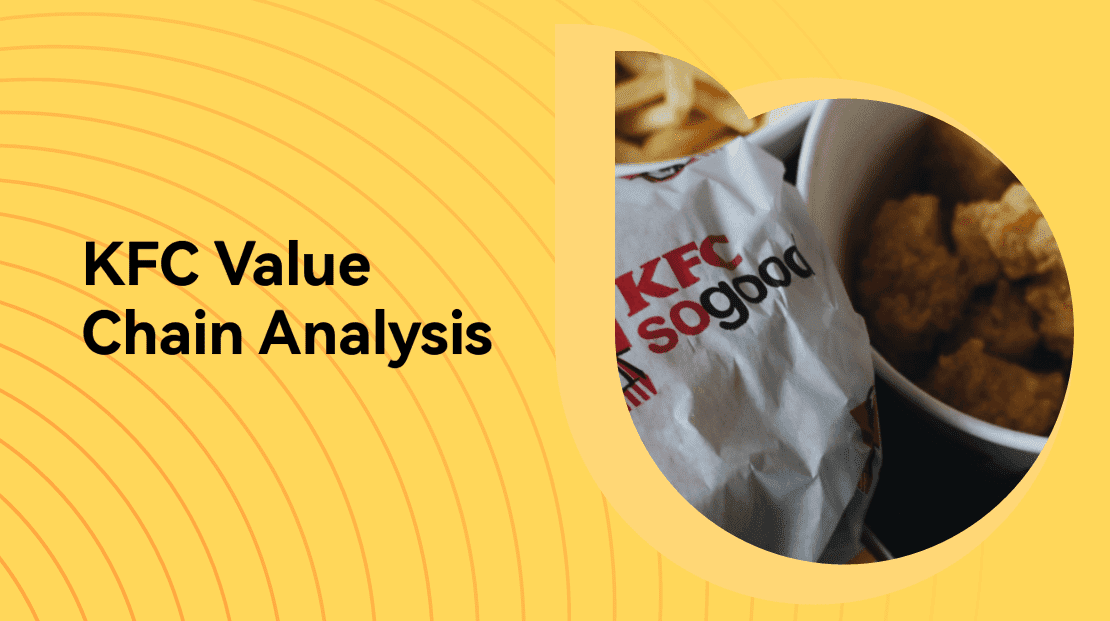In the realm of marketing and brand management, the Marketing Mix, often referred to as the 4Ps - Product, Price, Place, and Promotion - is a foundational concept. Herein, we delve into an in-depth analysis of PepsiCo's Marketing Mix. As a multinational food, snack, and beverage corporation, PepsiCo's strategies across these four pillars present intriguing insights for marketers and business enthusiasts alike.
PepsiCo Marketing Mix (4Ps) Mind Map
Imagine a canvas, a network of ideas and concepts branching out, intricately connected to reflect the workings of PepsiCo's 4Ps. A mind map captures the essence of each aspect within the marketing mix in a visual, easily digestible form. The PepsiCo Marketing Mix mind map is more than just a graphical tool; it’s an encapsulation of strategy that unveils the brand's blueprint for success.

Product Strategy of PepsiCo
PepsiCo's product strategy is multifaceted, aiming to meet the evolving needs and preferences of a global consumer base. With a robust portfolio spanning 23 globally renowned brands and generating more than $1 billion each in estimated annual retail sales, PepsiCo's product lineup is impressively diverse.
Notably, the product strategy of PepsiCo is distinguished by two key facets - variety and innovation.
Variety - A Portfolio Across Categories
PepsiCo's product lineup spans five major categories: beverages, snacks, nutrition, grains, and dairy. Within these categories are some of the world's most recognized brands, including Pepsi, Mountain Dew, Lay’s, Gatorade, Tropicana, Quaker, and Cheetos.
Beverages remain PepsiCo's most prominent category, housing not only carbonated drinks but also a wide array of non-carbonated beverages. From juices and juice drinks like Tropicana and Naked Juice to ready-to-drink teas and coffees such as Pure Leaf and Starbucks, PepsiCo provides consumers with a spectrum of choices.
Snacks are another crucial component of PepsiCo’s product portfolio. With brands like Lay’s, Cheetos, and Doritos, the company dominates the snack market. These products come in various flavors and versions tailored to regional tastes, further expanding their appeal.
PepsiCo's focus on nutrition is reflected in brands like Quaker, which offers wholesome products like oats, granola bars, and rice snacks. Simultaneously, brands like Sabra bring to the table a range of hummus and dips.
Innovation - Adapting to Market Trends
Beyond variety, PepsiCo’s product strategy is characterized by continuous innovation. The company has demonstrated a commitment to innovate its product line to align with changing consumer tastes and market trends.
In recent years, health and wellness have become increasingly significant in consumer choices. PepsiCo has responded by launching products that cater to this trend. The expansion of non-carbonated beverages, including water (Aquafina), sports drinks (Gatorade), and juice (Tropicana), is a prime example.
Additionally, the company has made strides in creating snacks that balance taste and nutrition. Reduced-fat versions of popular products and low-sodium alternatives highlight this focus. Moreover, by acquiring health-focused brands like Bare Snacks (known for its baked fruit and veggie chips) and KeVita (a producer of probiotic drinks), PepsiCo continues to bolster its presence in the health-conscious segment.
PepsiCo's product strategy pivots on its ability to provide a broad spectrum of products that resonate with diverse consumer needs and preferences worldwide. Whether it's offering a well-loved snack or responding to the growing demand for healthier options, PepsiCo demonstrates an impressive knack for staying in step with its consumers' wants.
Price Strategy of PepsiCo
PepsiCo's price strategy is a testament to the brand's deep understanding of its consumer base and the marketplace dynamics. Given the diverse portfolio that the company offers, it employs a blend of pricing strategies to ensure competitiveness, drive sales and maintain value for its consumers.
Competitive Pricing Strategy
One of the primary aspects of PepsiCo’s price strategy is its competitive pricing approach. As PepsiCo operates in an extremely competitive market, with Coca-Cola being a significant rival, its pricing decisions are often influenced by how its competition prices similar products.
PepsiCo closely monitors and analyses market trends, economic conditions, and competition to determine the ideal price points for its products. The intent is to ensure its beverages and snacks remain affordable to its vast consumer base while not undermining their perceived value.
Economy Pricing
Part of PepsiCo’s pricing strategy includes economy pricing. This involves offering larger packaging at lower unit prices, such as bulk-sized bags of chips or multi-pack cans of soda. This approach not only targets price-sensitive consumers but also encourages larger volume purchases, thereby driving sales.
Premium Pricing for Select Brands
In some cases, particularly with their health-focused brands or premium product lines, PepsiCo employs a premium pricing strategy. Brands like Naked Juice and Sabra Dips, for instance, are priced higher than many competing products.
The premium pricing in this case can be attributed to these brands' unique selling propositions - such as all-natural ingredients, health benefits, or exclusive flavors. This pricing model is aimed at a specific segment of consumers who are willing to pay a bit more for perceived higher quality or added health benefits.
Psychological Pricing
Psychological pricing is another tactic in PepsiCo’s pricing arsenal. By pricing products just below a round figure (for example, 4.99 instead of 5.00), the company can make the product appear more affordable to consumers. This subtle strategy is widely used in retail, playing into consumer psychology to encourage purchase decisions.
PepsiCo’s pricing strategy is intricate and dynamic, meticulously tailored to different market segments, product categories, and competitive pressures. It showcases the company’s relentless commitment to balance affordability for consumers while driving profitability and market share.
Place Strategy of PepsiCo
PepsiCo's place strategy, often referred to as its distribution strategy, revolves around making its products readily available to consumers worldwide. With a global presence in over 200 countries and territories, PepsiCo's extensive distribution network is a pillar of its market dominance.
Extensive Global Reach
PepsiCo's products are available not just in large-scale retail stores and supermarkets, but also in convenience stores, small local retailers, kiosks, and even vending machines. This vast distribution ensures that their products are always within reach for consumers.
PepsiCo has strategically divided its global market into six divisions: North America Beverages; Frito-Lay North America; Quaker Foods North America; Latin America; Europe Sub-Saharan Africa; and Asia, Middle East, and North Africa. Each division operates under a distinct strategy based on regional tastes, preferences, and competition.
Production and Distribution Facilities
PepsiCo's broad distribution is supported by numerous manufacturing and production facilities globally. These production units are often located near target markets to cater to local tastes and reduce transportation costs.
Post-production, the goods are transported to various distribution centers from where they are forwarded to retailers. PepsiCo also employs a Direct Store Delivery (DSD) system, wherein products bypass the retailer's warehouse, reaching directly from PepsiCo’s distribution centers to retail stores. This aids in better shelf management and faster inventory turnover.
E-Commerce Channel
With a surge in online shopping, PepsiCo has also made its products available through various e-commerce platforms. Recognizing the immense potential of this channel, PepsiCo continues to strengthen its online presence and develop partnerships with major e-commerce retailers to drive online sales.
On-Premise Partnerships
On-premise distribution through restaurants, cinemas, sports stadiums, and universities is another key component of PepsiCo's place strategy. The company has secured exclusive deals with numerous high-profile chains (like Pizza Hut, KFC, and Taco Bell under Yum! Brands) where only PepsiCo’s beverages are sold.
The place strategy of PepsiCo is about making its wide range of products accessible to consumers, regardless of where they are. Through an intricate and effective distribution network spanning across continents, cultures, and channels, PepsiCo ensures its brands remain within arm's reach of desire.
Promotional Strategy of PepsiCo
PepsiCo's promotional strategy is a dynamic amalgamation of traditional advertising, digital marketing, public relations, and direct consumer engagement. Through these diverse approaches, the company effectively creates awareness, builds brand equity, and drives consumer engagement.
Advertising and Marketing
PepsiCo employs a mix of television, print, out-of-home, and digital advertising to promote its products. It's particularly known for creating innovative, compelling ad campaigns that resonate with consumers. PepsiCo's Super Bowl commercials, for instance, have often become cultural phenomena, driving significant conversation and engagement.
Each of PepsiCo’s brands has a unique identity, and their advertising reflects that. For instance, while Pepsi's advertisements often leverage pop culture and celebrity endorsements, Quaker leans on its nutritional value in its marketing campaigns.
Digital Marketing
With the rise of the digital age, PepsiCo has been effectively harnessing digital marketing platforms. Its presence is strongly felt across social media channels like Facebook, Instagram, Twitter, and YouTube where they engage with consumers directly. These platforms allow PepsiCo to promote new products, run campaigns, handle customer queries, and gather valuable feedback.
Event Sponsorships
Event sponsorships form a significant part of PepsiCo's promotional strategy. The company frequently sponsors high-visibility sporting events (like the NFL Super Bowl), music festivals, and other cultural events. These sponsorships help generate tremendous brand exposure.
Public Relations
Public relations also play a vital role in PepsiCo's promotional strategy. Through press releases, conferences, CSR activities, and reports, PepsiCo communicates with its stakeholders and the general public.
The company has launched numerous initiatives showcasing its commitment to health, sustainability, and community development. Such initiatives not only promote the brand but also enhance its corporate reputation.
Sales Promotions
Sales promotions such as discounts, special offers, contests, and freebies are another tool that PepsiCo uses to stimulate sales. These promotions create excitement around the brand and encourage consumers to purchase.
PepsiCo's promotional strategy is a well-rounded approach combining traditional and modern tactics to engage consumers and stakeholders alike. It encapsulates the brand’s knack for being tuned in to cultural trends while staying true to its brand identity and corporate values.
PepsiCo Marketing Mix Cheat Sheet
To help reinforce understanding and make information more digestible, we’ve created a cheat sheet that outlines PepsiCo's Marketing Mix. The sheet summarizes essential details from this article in a concise format.

Key Takeaways
Our deep dive into PepsiCo's marketing mix paints a vivid picture of a brand that is profoundly consumer-centric, innovative, and adaptive to market trends.
From its broad product portfolio to competitive pricing, expansive distribution, and compelling promotions, PepsiCo showcases the power of an effectively implemented marketing mix. These elements collectively contribute to the brand's global recognition and significant market share.
As you navigate your marketing journey, our online whiteboard Boardmix offers a user-friendly interface for ideating, strategizing, and implementing your marketing mix. The pre-built 4Ps of Marketing Template can be your starting point in this journey, acting as a guide while you build your unique marketing mix.









